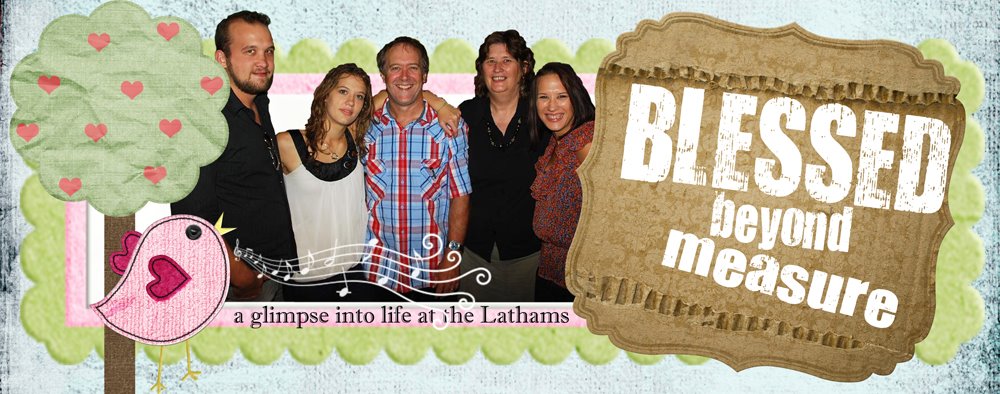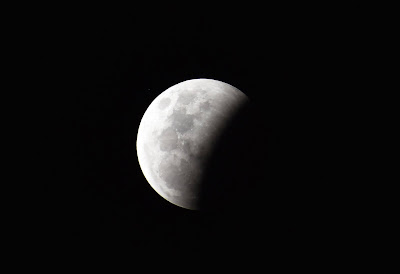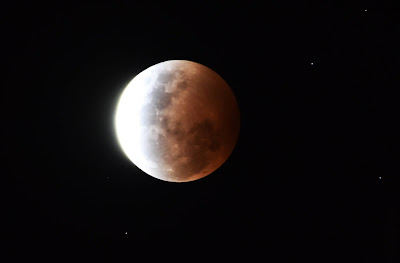THE RED OR BLOOD MOON...
Whilst I was out at dinner with the girls, Steve set up to photograph this year's red moon. It was a beautiful clear night so it would be great for photography.
I was please to make it home in time to sit and share the experience with him.
A "blood moon" happens when Earth's moon is in a total lunar eclipse. While it has no special astronomical significance, the view in the sky is striking as the usually whiteish moon becomes red or ruddy-brown.
The first lunar eclipse of 2021 is going to happen during the early hours of May 26. But this is going to be an especially super lunar event, as it will be a supermoon, a lunar eclipse and a red blood moon all at once. So what does this all mean?
A supermoon occurs when a full or new moon coincides with the Moon’s closest approach to the Earth.
The Moon’s orbit around Earth is not perfectly circular. This means the Moon’s distance from Earth varies as it goes around the planet. The closest point in the orbit, called the perigee, is roughly 28,000 miles closer to Earth than the farthest point of the orbit. A full moon that happens near the perigee is called a supermoon.
So why is it super? The relatively close proximity of the Moon makes it seem a little bit bigger and brighter than usual, though the difference between a supermoon and a normal moon is usually hard to notice unless you’re looking at two pictures side by side.
How does the Lunar elipse work:
A lunar eclipse happens when the Earth’s shadow covers all or part of the Moon. This can only happen during a full moon, so first, it helps to understand what makes a full moon.
Like the Earth, half of the Moon is illuminated by the sun at any one time. A full moon happens when the Moon and the Sun are on opposite sides of the Earth. This allows you see the entire lit-up side, which looks like a round disc in the night sky.
If the Moon had a totally flat orbit, every full moon would be a lunar eclipse. But the Moon’s orbit is tilted by about 5 degrees relative to Earth’s orbit. So, most of the time a full moon ends up a little above or below the shadow cast by the Earth.
But twice in each lunar orbit, the Moon is on the same horizontal plane as both the Earth and Sun. If this corresponds to a full moon, the Sun, the Earth and the Moon will form a straight line and the Moon will pass through the Earth’s shadow. This results in a total lunar eclipse.
To see a lunar eclipse, you need to be on the night side of the Earth while the Moon passes through the shadow. The best place to see the eclipse on May 26, 2021, will be the middle of the Pacific Ocean, Australia, the East Coast of Asia and the West Coast of the Americas. It will be visible on the eastern half of the U.S., but only the very earliest stages before the Moon sets.
Why does the Moon look Red:
When the Moon is completely covered by Earth’s shadow it will darken, but doesn’t go completely black. Instead, it takes on a red color, which is why total lunar eclipses are sometimes called red or blood moons.
Sunlight contains all colors of visible light. The particles of gas that make up Earth’s atmosphere are more likely to scatter blue wavelengths of light while redder wavelengths pass through. This is called Rayleigh scattering, and it’s why the sky is blue and sunrises and sunsets are often red.
In the case of a lunar eclipse, red light can pass through the Earth’s atmosphere and is refracted – or bent – toward the Moon, while blue light is filtered out. This leaves the moon with a pale reddish hue during and eclipse...









































0 comments:
Post a Comment